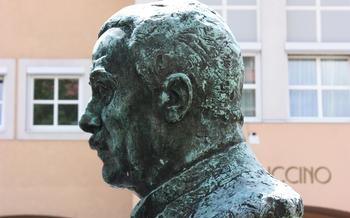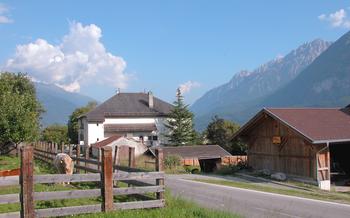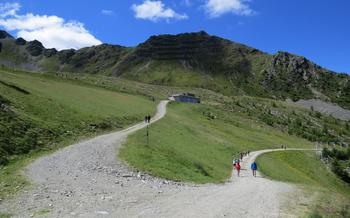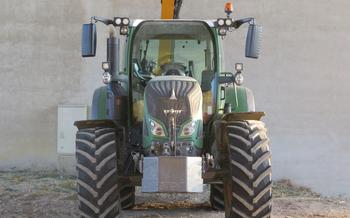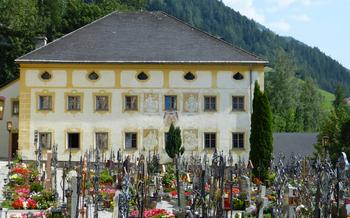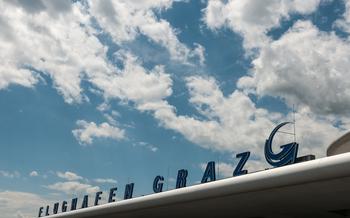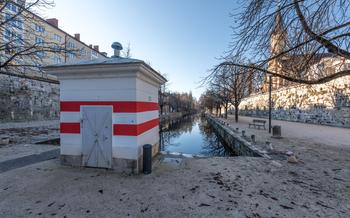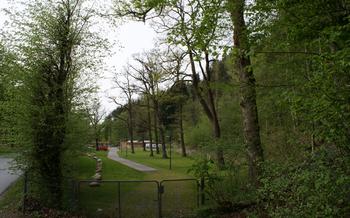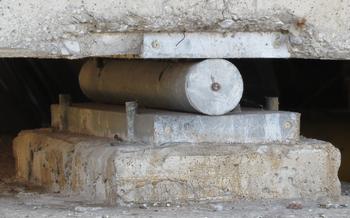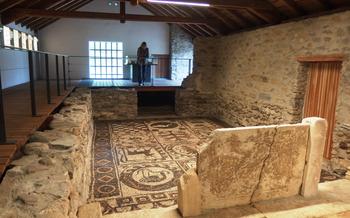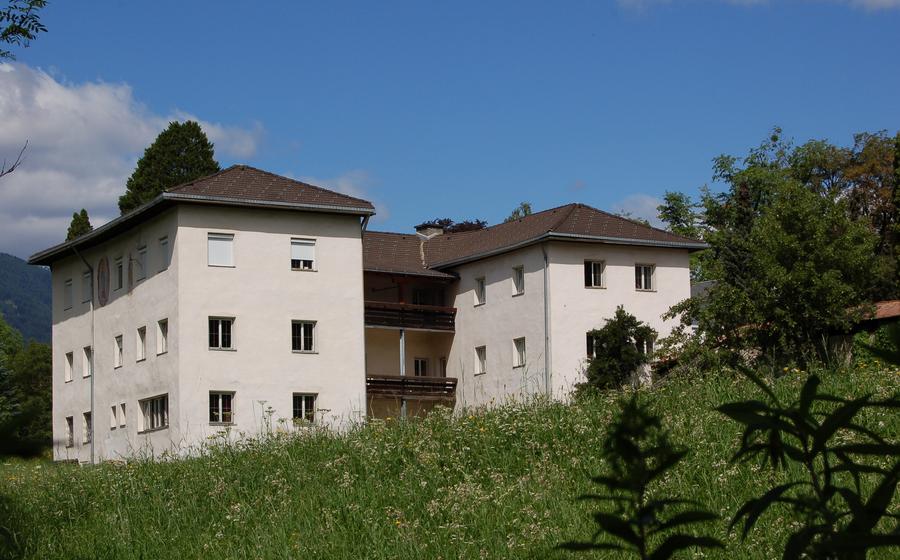
The Roman Tavern in Aguntum Museum
- A Journey Through Time: The Roman Tavern in Aguntum Museum
- Stepping into the Tavern: A Glimpse into Roman Life
- Culinary Delights of the Roman Era
- The Art of Roman Dining
- Exploring the Museum's Exhibits
- Educational Programs and Workshops:
- Uncovering the Roman World through Artifacts
- The Roman Theater: A Center of Entertainment
- The Roman Marketplace: A Hub of Commerce
- The Roman Villa: A Glimpse into the Life of the Elite
- The Roman Temple: A Center of Religious Worship
- The Roman Amphitheater: A Place of Spectacle and Entertainment
- Insider Tip: The Best Time to Visit
A Journey Through Time: The Roman Tavern in Aguntum Museum
The Roman Tavern in Aguntum Museum is a remarkable destination that offers a unique glimpse into the daily life and culture of ancient Rome. Located in the picturesque town of Lienz, Austria, the museum houses the remains of a tavern that once stood in the heart of the Roman city of Aguntum.
Uncovered during extensive archaeological excavations, this tavern provides an exceptional opportunity to step back in time and experience the sights, sounds, and flavors of Roman life. With its authentic reconstruction, engaging exhibits, and immersive atmosphere, the museum offers visitors an unforgettable journey into the past.
The tavern, dating back to the 1st century AD, was a vibrant hub of social activity, where Romans from all walks of life gathered to eat, drink, and socialize. It served as a meeting place for travelers, merchants, and locals, who would come together to share news, conduct business, and enjoy each other's company.
The archaeological discoveries made at the tavern site have been instrumental in shedding light on the daily lives of the Romans who lived in Aguntum. Unearthed artifacts, such as pottery, coins, and tools, provide valuable insights into their eating habits, customs, and daily routines. These artifacts are carefully displayed within the museum, offering visitors a tangible connection to the past.
In addition to the physical remains of the tavern, the museum also features a range of interactive exhibits that bring the Roman world to life. Visitors can explore the tavern's layout, learn about the food and drink consumed by the Romans, and even play interactive games that simulate the experience of dining in a Roman tavern. Through these immersive exhibits, visitors gain a deeper understanding of the social and cultural significance of this ancient establishment.
Stepping into the Tavern: A Glimpse into Roman Life
The Roman Tavern in Aguntum Museum provides an immersive experience that transports visitors back in time to the bustling streets of the ancient city. As you step into the reconstructed tavern, you'll be surrounded by authentic artifacts and replicas that bring Roman life to life. Discover the daily customs and habits of tavern-goers as you explore this vibrant social hub.
Imagine yourself as a weary traveler or a local resident seeking respite and camaraderie. The tavern served as a meeting place where people from all walks of life gathered to share stories, conduct business, and enjoy a meal. Experience the atmosphere of a lively Roman tavern, with the sound of laughter, clinking glasses, and lively conversations filling the air.
The museum's interactive exhibits allow you to explore the role of taverns in Roman society and the significance of food and drink in Roman culture. Learn about the types of food and beverages consumed, the cooking techniques used, and the social etiquette surrounding dining. Discover the importance of taverns as places of relaxation, entertainment, and social interaction.
Culinary Delights of the Roman Era
Step into the realm of culinary delights as you explore the authentic recipes and cooking techniques of the ancient Romans. Discover the staples of their diet, such as wheat, barley, and legumes, and learn how they transformed these simple ingredients into flavorful dishes. Be amazed by the variety of Roman bread, from the iconic flatbread to the luxurious honey-sweetened pastries.
At the Roman Tavern in Aguntum Museum, you'll have the chance to sample traditional Roman dishes, lovingly recreated using ancient recipes. Indulge in the savory flavors of "puls," a hearty porridge made from wheat or barley, accompanied by a drizzle of olive oil and a sprinkle of herbs. Experience the tangy delight of "garum," a fermented fish sauce that added umami to many Roman dishes.
Immerse yourself in the art of Roman cooking as you watch skilled chefs demonstrate ancient techniques. Learn how they used simple tools and ingredients to create complex and satisfying meals. Discover the secrets of their spice blends, such as the aromatic "garum," and how they used herbs and vegetables to enhance the flavors of their dishes.
Don't miss the opportunity to participate in a Roman feast, a culinary extravaganza that transports you back in time. Savor the flavors of roasted meats, freshly baked bread, and seasonal vegetables, all served in the traditional Roman style. Sip on a glass of mulled wine, or "mulsum," as you recline on a replica of a Roman dining couch, experiencing the convivial atmosphere of a Roman banquet.
Whether you're a foodie, a history buff, or simply curious about ancient cultures, the Roman Tavern in Aguntum Museum offers a unique and immersive culinary journey that will tantalize your taste buds and transport you to the heart of the Roman Empire. So come hungry, come curious, and prepare to feast like a Roman!
The Art of Roman Dining
Romans took great pride in their meals, considering them an essential part of their social and cultural lives. Dining customs and etiquette were strictly observed, reflecting the hierarchal structure of Roman society.
-
Tableware and Utensils: Romans used a variety of tableware and utensils, including plates, bowls, cups, spoons, and knives. The wealthy often used fine pottery or metal tableware, while the lower classes used more basic materials such as wood or bone.
-
Dining Etiquette: Romans followed strict dining etiquette, which varied depending on the formality of the occasion. Guests were expected to arrive on time, recline on couches, and wash their hands before eating. They also had to follow specific rules for passing dishes, pouring wine, and taking turns speaking.
-
Social Significance of Meals: Meals were an important time for Romans to socialize and build relationships. They often hosted dinner parties or banquets, which were lavish affairs with multiple courses, entertainment, and conversation. These gatherings were a way to strengthen social ties, discuss politics, and celebrate special occasions.
-
Interactive Displays on Roman Dining Habits: The Aguntum Museum features interactive displays that allow visitors to experience Roman dining habits firsthand. They can learn about the different types of food eaten by Romans, how it was prepared, and how it was served. They can also try their hand at using Roman tableware and utensils, and even participate in a simulated Roman feast.
Exploring the Museum's Exhibits
The Aguntum Museum houses a wealth of artifacts and exhibits that bring the Roman city and its inhabitants to life. Visitors can wander through the galleries and immerse themselves in the rich history and culture of ancient Rome.
Interactive displays showcase the daily lives of Roman citizens, from their domestic routines to their social customs. Visitors can learn about the different types of food they ate, the clothes they wore, and the games they played. They can also explore the role of religion in Roman society and see how the Romans worshipped their gods.
The museum's collection of artifacts includes ceramics, glassware, jewelry, tools, and weapons. These objects provide a tangible link to the past and allow visitors to imagine what life was like in Aguntum over 2,000 years ago.
In addition to the permanent exhibits, the museum also hosts temporary exhibitions on various aspects of Roman culture. These exhibitions often feature new discoveries from archaeological excavations and offer visitors a unique opportunity to learn about the latest research on Roman history.
Educational Programs and Workshops:
The Aguntum Museum offers a diverse range of educational programs and workshops tailored for visitors of all ages and interests. Step into the role of a Roman craftsman and learn the art of pottery, leatherworking, or metalworking in one of the hands-on workshops. For budding historians, there are workshops on Roman history, archaeology, and daily life, providing a deeper understanding of the Roman era.
Families with children can participate in engaging educational programs that bring Roman history to life. Children can dress up as Roman soldiers, create their own mosaics, or participate in storytelling sessions that transport them back in time. These programs not only entertain but also spark their curiosity and foster a love of learning.
Guided tours conducted by experts and reenactors offer a unique opportunity to explore the museum and its exhibits with in-depth insights. These knowledgeable guides share fascinating stories, anecdotes, and historical facts, bringing the Roman world vividly to life. Visitors can ask questions, engage in discussions, and gain a deeper appreciation for the culture and achievements of the Roman Empire.
Immersive learning experiences are a hallmark of the Aguntum Museum. Through interactive games, simulations, and reenactments, visitors can experience Roman life firsthand. They can participate in a virtual chariot race, try their hand at Roman cooking, or witness a reenactment of a Roman military drill. These immersive experiences create lasting memories and foster a deeper understanding of the Roman world.
Uncovering the Roman World through Artifacts
The museum houses a wealth of artifacts that provide a tangible glimpse into the daily lives of the Romans who once inhabited Aguntum. Ancient coins, pottery, and tools offer insights into their economic activities and technological advancements. Jewelry, sculptures, and mosaics showcase their artistic talents and cultural influences. Inscriptions and manuscripts, including fragments of official documents and personal letters, offer a glimpse into their language, beliefs, and social structures. Interactive displays accompany many of these artifacts, allowing visitors to explore their significance and context in greater depth. Through these carefully curated objects, the museum brings the Roman world to life, inviting visitors to connect with the past and gain a deeper understanding of this fascinating civilization.
The Roman Theater: A Center of Entertainment
The Roman theater in Aguntum was a magnificent structure built in the 1st century AD. It served as a central venue for entertainment and cultural events in the Roman city. The theater's well-preserved remains offer visitors a glimpse into the rich theatrical traditions of Roman society.
With a seating capacity of over 3,000 spectators, the theater hosted a variety of performances, including plays, comedies, and musical shows. The stage area, adorned with intricate carvings and statues, provided a dynamic backdrop for the performances. The acoustics of the theater were carefully designed to ensure that the actors' voices could be heard clearly throughout the auditorium.
Visitors to the Aguntum Museum can explore the reconstructed theater and learn about its history and significance. Interactive exhibits bring to life the vibrant atmosphere of Roman theater performances, showcasing the costumes, props, and musical instruments used by the actors. Visitors can also take a virtual tour of the theater, experiencing the thrill of a live performance from the perspective of a Roman audience member.
The Roman theater in Aguntum is a testament to the importance of entertainment and culture in Roman society. It stands as a reminder of the rich artistic heritage of the Roman Empire and offers visitors a unique opportunity to immerse themselves in the world of ancient Roman theater.
The Roman Marketplace: A Hub of Commerce
The Roman marketplace, known as the forum, was a bustling center of commerce and social activity in the ancient city of Aguntum. Located in the heart of the city, the forum served as a meeting place for traders, merchants, and locals to exchange goods and services.
The marketplace was a large, open square surrounded by shops, stalls, and colonnaded walkways. Merchants from across the Roman Empire would gather here to sell their wares, including exotic spices, fine textiles, pottery, glassware, jewelry, and agricultural products.
Market days were a lively affair, with the air filled with the sounds of haggling, laughter, and the clanging of coins. Farmers would bring their fresh produce to sell, while artisans displayed their handcrafted goods. The marketplace was also a place for locals to socialize, catch up on the latest news, and exchange gossip.
In addition to trade, the forum also served as a venue for official business and public announcements. Magistrates would hold court in the marketplace, and important decrees and proclamations would be read aloud to the gathered crowd.
The Roman marketplace was an integral part of the city's economy and social life. It was a place where people from all walks of life came together to exchange goods, ideas, and experiences. The interactive displays at the Aguntum Museum bring this vibrant marketplace back to life, allowing visitors to experience the hustle and bustle of Roman commerce firsthand.
The Roman Villa: A Glimpse into the Life of the Elite
The Roman villa, an opulent dwelling nestled within Aguntum's ancient walls, offers a glimpse into the lavish lifestyle of the Roman elite. Its grand architecture, adorned with intricate frescoes and mosaics, stands as a testament to the wealth and power of its inhabitants. Step inside to discover a world of luxury and comfort, where every detail was meticulously crafted to cater to the needs of its privileged occupants.
Explore the villa's sprawling rooms, each serving a specific purpose in the daily lives of its inhabitants. From the grand reception halls, where guests were entertained in lavish banquets, to the private chambers, where the villa's owners sought solace and relaxation, every space exudes an aura of opulence. Admire the exquisite furnishings, imported from distant lands, and marvel at the intricate designs that adorned every surface.
Imagine the bustling activity that once filled these halls as servants scurried to attend to the needs of their masters. Picture the laughter and chatter of guests echoing through the villa during grand feasts, the sound of music and dancing filling the air, and the faint whisper of secrets shared in hushed tones. The villa's walls hold countless stories, waiting to be unearthed and explored by curious visitors.
The Roman Temple: A Center of Religious Worship
In the heart of the ancient Roman city of Aguntum, nestled amidst the ruins of temples, theaters, and marketplaces, stands the Roman Temple, a testament to the religious beliefs and practices of the Roman Empire. This sacred edifice, with its imposing architecture and intricate designs, invites visitors to delve into the spiritual realm of the ancient Romans.
The Roman Temple served as a central place of worship for the inhabitants of Aguntum. Dedicated to various deities, including Jupiter, Juno, and Minerva, the temple was a place where Romans sought divine guidance, offered prayers, and performed religious rituals. The temple's design reflects the Romans' deep reverence for their gods. Its grand entrance, adorned with ornate carvings and sculptures, leads to a spacious interior illuminated by the flickering flames of oil lamps. The walls are lined with niches that once housed statues of deities, each representing a different aspect of the Roman pantheon.
Visitors to the Roman Temple can explore the various chambers and rooms that make up this sacred space. The main sanctuary, where religious ceremonies took place, features a raised platform upon which the altar stood. Here, priests and priestesses would make offerings to the gods, conduct rituals, and receive divine messages through oracles. Adjoining rooms served as treasuries, where precious offerings and religious artifacts were stored.
Interactive exhibits and multimedia displays throughout the temple provide visitors with an immersive experience, allowing them to understand the significance of religious practices in Roman society. Visitors can learn about the different deities worshipped by the Romans, the rituals and ceremonies performed in their honor, and the role of religion in shaping the lives of ordinary Romans.
The Roman Amphitheater: A Place of Spectacle and Entertainment
The Roman Amphitheater in Aguntum is another must-see attraction for history enthusiasts. Built in the 2nd century AD, this impressive structure once hosted gladiatorial fights, animal hunts, and other forms of public entertainment. Step into the arena and feel the excitement of the ancient crowd as you explore the well-preserved remains of this iconic site. Interactive displays and multimedia presentations bring to life the thrilling events that took place here, offering a glimpse into the brutal and fascinating world of Roman gladiators.
Insider Tip: The Best Time to Visit
Timing is everything when planning a visit to the Roman Tavern in Aguntum Museum. For the most enjoyable experience, consider the following recommendations:
-
Ideal Time of Year: Aim for the shoulder seasons (May-June and September-October) when the weather is pleasant and crowds are smaller. In summer, the museum can be quite busy, while winter brings cold temperatures and reduced hours.
-
Special Events and Festivals: Check the museum's calendar for special events and festivals that bring the Roman era to life. Reenactors, demonstrations, and cultural performances add an extra dimension to your visit.
-
Recommended Restaurants and Accommodation: Lienz offers a range of dining options, from traditional Austrian cuisine to international fare. For a truly immersive experience, indulge in a Roman-inspired meal at a local restaurant. Accommodation options range from budget-friendly guesthouses to comfortable hotels.
-
Tips for Making the Most of Your Visit: Wear comfortable shoes as you'll be doing a lot of walking. Bring a camera to capture the stunning artifacts and exhibits. Allow plenty of time to explore the museum and the surrounding archaeological site. Take advantage of the interactive exhibits and hands-on activities to fully engage with Roman history.
